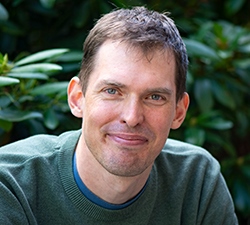News
•
12 Feb 2024
Evolutionary traps for humanity
Humankind risks getting stuck in evolutionary traps, ranging from global climate tipping points to misaligned artificial intelligence, chemical pollution, and accelerating infectious diseases. Researchers have identified 14 of these, but also point to ways out.
The evolution of humanity has been an extraordinary success story. But the Anthropocene — the proposed geological epoch shaped by us humans — is showing more and more cracks. Multiple global crises, such as the Covid-19 pandemic, climate change, food insecurity, financial crises, and conflicts have started to occur simultaneously in something which scientists refer to as a polycrisis.
“Humans are incredibly creative as a species. We are able to innovate and adapt to many circumstances and can cooperate on surprisingly large scales. But these capabilities turn out to have unintentional consequences. Simply speaking, you could say that the human species has been too successful and, in some ways, too smart for its own future good,” says GEDB author Peter Søgaard Jørgensen, also affiliated with Stockholm Resilience Centre and Anthropocene laboratory
Evolution of the Anthropocene
He is the lead author of a landmark study published as part of a larger assessment in the journal Philosophical Transactions of the Royal Society B. The assessment gathers insights from a wide range of different scientific disciplines across the natural and social sciences and humanities, to understand how the Anthropocene evolved and how global sustainability can continue to evolve in the future.
The study shows how humanity could get stuck in “evolutionary traps” — dead ends that occur from initially successful innovations. In a first scoping effort, they identify 14 of these, including the simplification of agriculture, economic growth that does not deliver benefits for humans or the environment, the instability of global cooperation, climate tipping points, and artificial intelligence.
“Evolutionary traps are a well-known concept in the animal world. Just like many insects are attracted by light, an evolutionary reflex that can get them killed in the modern world, humankind is at risk of responding to new phenomena in harmful ways,” explains Peter Søgaard Jørgensen.
The research team propose a model with four phases, namely (1) initiation of a new trajectory, (2) global scaling of the trajectory, (3) masked signs of negative impacts in the global system and (4) activation of trapping mechanisms and growing risks of negative impacts
The simplification of agricultural systems is an example of such a trap. Relying on a few highly productive crops such as wheat, rice, maize, and soya, has meant that calories produced have skyrocketed over the past century. But it also meant that the food system has become very vulnerable to environmental change, such as weather extremes, or new diseases.
Of the 14 evolutionary traps, 12 are in an advanced state, meaning that humankind is on the verge of getting stuck to a degree where it becomes very difficult to get out. What’s more, societies are continuing to move in the wrong direction in 10 of these 14. Alarmingly, these evolutionary traps tend to reinforce each other.
Humanity is not doomed
This does not mean that humanity is doomed to fail, argue the researchers. But we must start to transform our societies actively. So far, the Anthropocene has to a large extent been an unconscious byproduct of other evolutionary processes.
“It’s time for humans to become aware of the new reality and to collectively move where we want to as a species. We have the capability to do that and are already seeing signs of such movements. Our creativity, and our power to innovate and collaborate equip us with the perfect tools to actively design our future. We can break out of dead ends and business-as-usual, but for that, we must nurture the capacity for collective human agency and design settings where it can flourish,” explains Peter Søgaard Jørgensen.

